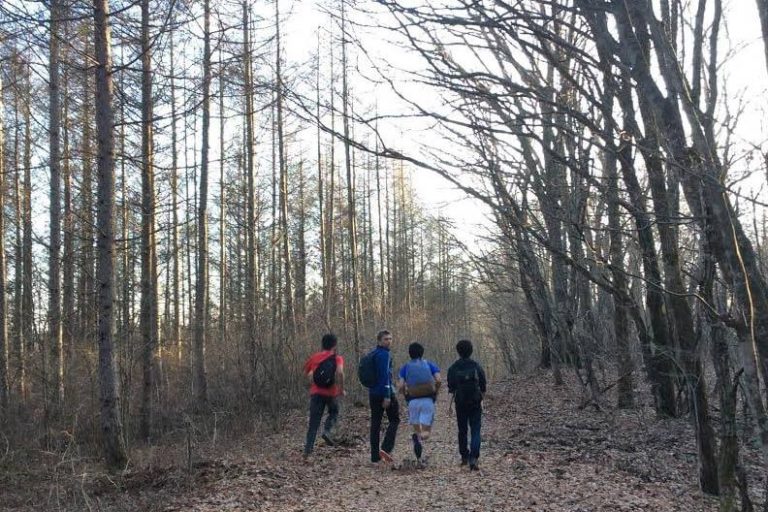 Written by Izumi Tsurumi
Written by Izumi Tsurumi
Ms. Tsurumi coordinates the Leadership program at UWC ISAK Japan.
“Noooooooooo!!” was a cry we heard from different areas on campus, on multiple occasions in the last two weeks here at UWC ISAK Japan. These cries came from Grade 10 students who were put on a mission to create “an awesome domino structure” using nearly 2000 domino pieces in each of their classes. In their journey of creating such a structure, they encountered not just one, but many (some students described ‘countless’) failures of collapsing dominos. Despite these failure moments, many kept going to complete their mission. If you ask any of the Grade 10s about what they think of dominos, they will most likely cringe, saying something like “I never want to touch dominos ever again!”
The point of this task was not to give Grade 10s a torturous experience in the first week of their school life. It was to experience the kind of challenges that leaders often experience in the process of creating positive change: uncertainty, distractions, conflict in opinions, things not going our way.
Students were uncertain if their fun, creative plan for the domino structure was really going to work. Some students were distracted by activities, homework, social life, and didn’t show up when others did. Some experienced their ideas not being heard or their ideas clashing. EVERYONE experienced the failure of toppling down multiple domino pieces.
However through these challenges, students identified actions that they took for themselves and others that helped to move the mission forward, many of which resonated with the four areas of leadership practice that UWC ISAK Japan focuses on:
- Identifying what is important and needed: “focused on taking responsibility for the team when it felt challenging to keep going”; “accepted others’ failure kindly because one didn’t need to feel more guilty than they already felt”
- Taking purposeful action in the face of discomfort: “took walks to calm down after multiple failure rather than taking it out on people”; “kept working to complete the mission even when lethargy was taking over”
- Using diversity as a strength: “shared ideas and built on each other’s ideas to create a plan for the structure”; “when the dominos didn’t work, they exchanged ideas about how to change the plan to be still awesome but feasible”
- Supporting others in this practice: “providing positive encouragement to each other when dominos collapsed”; “cooking and putting on music to help each other take much needed break”
While students on the whole were not 100% satisfied with the “awesomeness” of the domino structures that they created, all of the classes completed the challenge. I hope however that through their journey, they were able to understand the value of the above leadership actions we ask students to practice. We will be practicing them throughout the year to get better at them. Hopefully at the end of this year, students will feel confident that with the leadership skills gained, they can overcome the challenges that come with domino building (or any other change making journey) even more gracefully, and create a truly awesome outcome that they are 100% happy with.




